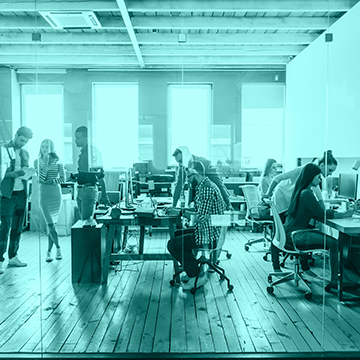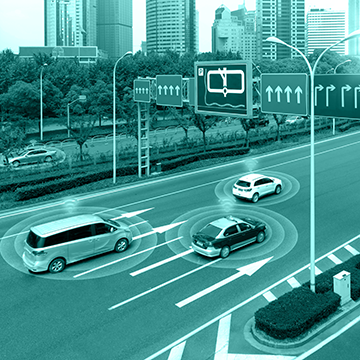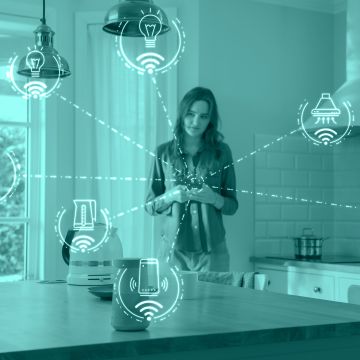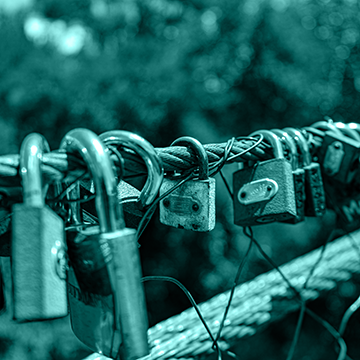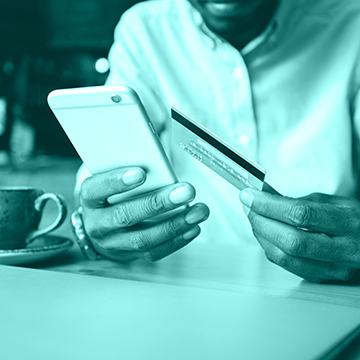Cybersecurity
Cybersecurity is a constant struggle to stay on top and it matters to everyone- governments, enterprises, humanitarian bodies, and individuals all rely on the privacy that it provides
Our expertise
When everything centres around data, cybersecurity is the priority. As cybersecurity consultants, we helped design the digital economy strategy of leading countries. As a result, we understand the impact that cybersecurity has on how a government operates. Further, we have designed regulatory frameworks, and know the policies that are in place (and to come). Plus we understand the changing market landscape. As much as the industry has changed, there are still areas of development that will change the game. As much as the industry has changed, there are still areas of development that will change the game. For example, quantum computing is going to completely change the way cybersecurity has to operate, neutering current encryptions. We understand the cutting edge of cybersecurity. Our world leading knowledge is chiefly developed through hands on experience by developing go-to-market strategies for previously unseen cybersecurity propositions.
RDC can support you with:
- Cybersecurity strategy
- Cybersecurity M&A
- Cybersecurity regulation
- Implementing cybersecurity into your operations
- Cybersecurity market intelligence
There is no avoiding cybersecurity
There is no question that cybersecurity is vital to protect information and data. The most important thing to remember is that all of our computers, networks, and electronic devices rely on cybersecurity. The professionals predicting, preventing, and responding to attacks must be remembered as they lead the industry that protects us all.
In almost every industry, preventative cybersecurity measures protect against leaks and breaches. Firstly, government agencies work with use cybersecurity to safeguard military communications. Not to mention businesses that need to shield financial information from malicious actors. Also, large retailers take cybersecurity measures to protect their customers’ data. Further, healthcare companies use cybersecurity to protect sensitive patient data. In other words, cybersecurity affects everyone.
The Bureau of Labour Statistics projects that job opportunities for information security analysts will increase by 33% from 2020 to 2030. Compared to the 8% projected growth for all occupations, we see information security analysists far outpacing their counterparts. As a result, cybersecurity planning needs to target building up human capital to meet this extraordinary growth. Now, its the role of cybersecurity consultants like us to help overcome these challenges.
The evolution of cybersecurity
Creepers and ARPANET: the 1970s
Cybersecurity took off when Bob Thomas developed Creeper, a computer program that could move across ARPANET’s network, leaving a breadcrumb trail everywhere it travelled. Following this, Reaper came out, developed by Ray Tomlinson, it was the first antivirus software and self-replicating program. In short, it was the first computer worm that could chase and delete Creeper.
Commercial antivirus began in the 1980s
1987 was the year of commercial antivirus. Firstly, Ultimate Virus Killer released. Secondly, Andreas Lüning and Kai Figge developed the first antivirus product for Atari ST. Further, the first version of NOD antivirus released. Finally, John McAfee founded McAfee, releasing VirusScan in the U.S.
The world came online in the 1990s
As the internet took off, more people began putting their personal information online. Consequently, organised crime entities turned digital to steal data from governments and individuals. Shortly after, firewalls and antivirus software became available to protect the public against network security threats.
Threats diversified and multiplied in the 2000s
In the early 2000s, crime organizations began to heavily fund professional cyberattacks. In response, governments clamped down on hackers with far tougher sentences for those found guilty. Up against more sophisticated cybersecurity measures, hackers put in more effort to evade them. In return this created a cycle of competition where hackers and cybersecurity experts battle for dominance.
The next generation: 2021
The cybersecurity industry continues to grow at the speed of light. In fact, the global cybersecurity market is forecast to grow to $345.4bn by 2026, according to Statista. Ransomware attacks are generally considered the most common threat to an organisation’s data security. They will become more prevalent in the future.
Top 12 Cyber fines and attacks
Cyber-attacks rose by 42%, and fines increased by 1580% in 2022. Consequently, they cost companies, on average, $4.35 million. The below penalties and attacks highlight why cybersecurity is a must-have for companies.
Cyber fines
- British Airways £183,390,000 ($230m) ICO fines
- Marriot International, Inc received a £99,200,396 ($124m) fine in 2019
- T-Mobile has recently agreed to a £445,450,000 ($500m) fine.
Cyber attacks
-
Jan 2022, 500 cryptocurrency wallets targeted with over $30m
-
In March 2022, hacking group Lapsus$ Microsoft. The group announced they hacked Microsoft, compromising Cortana, Bing, and several other products
-
February 2022, News Corp admitted server breaches in 2020, with emails stolen from its journalists
-
December 2021, data and offered for trade in hacked data forums leaked of 3.7 m FlexBooker users. Consequently, many clients left the platform after the incident
-
FInancial gain is not the only motivation for breaches. In February 2022, GiveSendGo –had funds redirected to an opposition page and the donor’s data exposed – a case of a Distributed Denial of Service attack
-
April 2022, 8m Cash App users affected after a former employee breaches its servers.
-
February 2022, Marquard & Bahls IT infrastructure destabilised, leading to the closure of over 200 gas stations.
The impacts of cybersecurity
-
Business protection- Cybersecurity solutions protect businesses against cyber threats such as ransomware and adware
-
Increased productivity- Cybersecurity minimises the risk of viruses slowing down your business’ computers, consequently making work virtually impossible
-
Increases customer confidence- A significant benefit of cybersecurity is inspiring trust in your customers that their data is safe
-
Customer Protection- Protect customers from cyber breach’s by secure your business
-
Prevent website downtime- A cyber breach could force website downtime, resulting in lost revenue.
5 Cybersecurity trends to watch
Internet of Things vulnerabilities
The Internet of Things (IoT) is experiencing a boom in adoption. Consequently, over 64 billion new IoT devices will enter the market in the next five years, according to Insider Intelligence. In part, remote work is contributing to this growth, however, consumer good play an undeniably large role too. Historically, IoT provided businesses with a wide range of opportunities that improve customer quality of life. On the other hand, it provides hackers and malicious actors with a route in. Simply put, more IoT devices means the number of entry points to steal your business data or damage your digital infrastructure. Modern IoT devices are less protected and secure than computers or phones, as a result there are fewer security measures. In 2023 and beyond, IoT will be one of the most critical aspects of cybersecurity trends.
Artificial intelligence (AI) is on the rise
Using machine learning (ML) and computer-assisted security measures makes cybersecurity practices more efficient and affordable. To explain, ML is able to anticipate and respond to active attacks in real time by developing patterns and manipulating data. Further, to develop automated security systems, face detection, and automatic threat detection, artificial intelligence (AI) has become essential. While this may be true, hackers also use AI to build malware and bypass the latest security protocols. To detect and prevent data breaches, AI-powered threat detection protocols and systems are valuable tools.
Proactive cybersecurity
Now, more than ever, organisations must invest in proactive cybersecurity. For example, penetration testing is one of the most common and effective methods today. Used for cyber hygiene and as a monthly practice against threats to sensitive data. In addition, larger companies often have established security teams to prevent cyber threats. However, smaller companies do not always have the resources to support cybersecurity teams, increasing their vulnerability.
More mobile device use
Since 2019, there has been a 50% rise in mobile banking malware attacks. The reason is simple – the increased use of mobile phones in almost every sphere of our lives. This trend will grow with advancing technologies and smartphone apps. Though phone manufacturers prioritise user safety, people still share their personal information on social media and the internet, making it easy access for hackers. As a result, the public are open to the most common types of mobile phone based attacks. For example, malware, data tampering, phishing attacks, and ransomware. To defend against hackers, businesses must follow several recommendations. Primarily, they must take proactive measures, including educating employees, running simulations with them, and defining what is acceptable and what is not.
Distributed teams and remote workers
Employees are most vulnerable to an attack through human error and lack of knowledge. This means that by and large, the lion’s share of attacks come from a human entry point. It has become even easier for hackers to breach a company’s security posture through remote working. In part, this is because people have less security when working form home. Whether they have a less secure connection, leave their devices unattended, or get tricked by email, the vectors of attack increase. That is why generally, businesses have already implemented security policies such as no sharing of passwords and using a VPN to secure business data.
Cybersecurity is at the core of modern society
Rightly, personal information exposure is a concern after multiple breaches of secure systems. Banks, governments, credit providers, and insurance companies are increasingly concerned about cybercrime chiefly because of the financial and reputational implications of suffering a breach.
The risk to corporate and customer data
Hackers use private digital information like trade secrets, research data, consumer identification, and financial records to exploit businesses and customers alike. This leads to identity theft, extortion, data loss, and the shutdown of critical systems. Consequently, data-storing organisations must protect their customers and corporations from these threats by properly securing data networks.
Increasing sensitive data storage is driving the data-centric economy
IoT devices are increasingly critical to the data-driven economy due to massive quantities of stored sensitive data. Governments, factories, retail and personal settings will account for 43 billion more IoT devices in use by the end of 2023, according to McKinsey & Co. As a result of this inflation of devices, online hosted data increase. With this in mind, cybersecurity professionals are in ever-increasing demand.
Critical infrastructure cybersecurity
Data breaches threaten critical infrastructure assets such as energy, communication, finances, and transportation. If attacks are successful then personal and company data are under threat. In terms of critical infrastructure, some of the most vulnerable pieces of equipment include traffic lights, dams, banks, and power grids. If disrupted daily activities fall apart, creating a significant health and safety risk.
Cybersecurity affects nations, economies, and global infrastructure
Government networks must be impenetrable as geopolitics becomes more unstable and countries wage cyberattacks against each other. Markedly, election hackers are spreading misinformation, shutting down voter registration databases, creating false voter files, and locking election office computers, according to The Washington Post. Not only do we see threats to democratic processes, but also, cybersecurity fights against organisations and criminals who want to use private data for their own purposes. However, security efforts are often not up to the task. At this time, efforts must increase to prevent theft, data loss, economic and political incidents, and public health threats. As the digital landscape becomes more vulnerable, cybersecurity professionals are in demand.
Top Ten Cyber Threats:
-
Social engineering- Employees are often tricked into sharing network access.
-
Third-party exposure- Vendors, clients and partners with poor security can provide access to an otherwise well-protected network
-
Configuration mistakes- Install cutting-edge security software correctly or it will be ineffective
-
Poor cyber hygiene- Employee training is essential to ensure cyber safe practices
-
Cloud vulnerabilities- Online data storage and transfer provide increased opportunities for potential hack
-
Mobile device vulnerabilities- Threats have more access when devices connect to multiple networks
-
Internet of Things- IoT devices are often hackable to obtain network access
-
Ransomware- Hackers can capture sensitive data or take down networks and demand payment for restored access
-
Poor data management- Keeping unnecessary amount of data facilitates data loss
-
Inadequate port attack procedures- Security patches must be as strong as the rest of your cybersecurity protections.
Get In touch
If you have a requirement you would like to tell us about request a call back below



